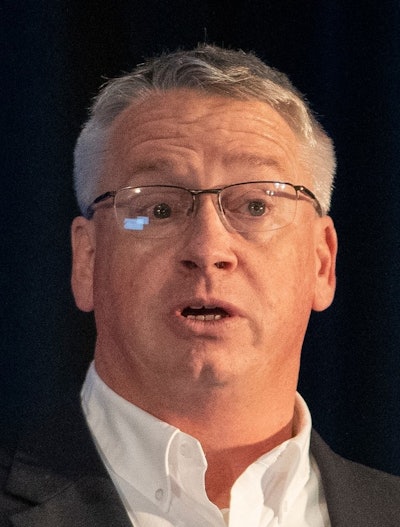
“Everything looks like failure in the middle.” This quote is known as “Kanter’s Law” and attributed to Harvard Professor Rosabeth Moss Kanter. In the middle of any endeavor, including brand and CP/CM engagements, things can seem the most confusing, most complicated, most… “muddy.” However, it’s also true that getting to the finish line can often feel just as hard! So many systems, materials, and machines must come together at the right time, in the right way to initiate production and shipping of new product launches. Even when it’s an existing product coming from new manufacturing assets, perhaps after an expansion or addition to a co-man’s operation, the startup can still feel like the first time the product has ever been made. Being good at initiating production, startups, initial inventory builds, and initial shipments – commercialization we call it – can be a true differentiator for CP/CM providers alike. While co-mans may have more pieces in motion during the commercialization phase of an activity, this phase also presents an opportunity for a CP/CM to truly shine!
 | What Co-packers Gain by Giving Back |
Here are a few thoughts to consider, and develop clarity on, when assessing how you, as a CP/CM, support your clients in their initial execution activities:
- How much of the product distribution piece are you willing to support? Do you expect to supply your brand owner customer with their product, then be done? Or, do you have the systems and willingness to tackle shipping orders on customers’ behalf?
- How much of initial sourcing of materials, ingredients, packaging, etc. are you willing to be involved in? What’s different if those items are provided by the brand owner / customer than if you do it for them? What are the implications of these choices to startup timeline, ongoing lead time, and/or overall product costs?
- Are you clear on your routine planning processes, including scheduling? Whether you set up your schedules monthly, weekly, or more often, have you communicated those factors to your customers to help them know when they must make volume and schedule change decisions by to have you execute satisfactorily? The more responsive you can be, the better. But, don’t be so responsive that you sacrifice your own sensibilities (not to mention cash flow)!
- Do you have specific capabilities, especially in the “certifications” space (Gluten Free, Organic, Ethically Sourced, etc.) that make you a better choice than the customer’s own manufacturing facilities? If so, are you keeping those certifications up to date and ready to offer to potential customers? Are you ready to guide them in the process of certifications and application to their products?
- Have you experienced, and now learned how you want to handle, the volatility of a new product or process startup? Are you OK with the differences between initial volume promises and actual realized orders? Are you OK with your customer staying right “in your back pocket,” or would you prefer that they let you “just make them product?” Between those 2 bookends is where the best leveraging of ideas like Partnership and Relationship usually takes place. Startup volatility can range from unexpected outcomes to surprising levels of stress in both the provider and customer organizations.
So many questions must be asked when it comes to commercialization preparedness. I haven’t even touched on clear cost communications (can you say tier pricing?) or quality and specification ownership expectations. But I’ve spent the most time, with the most responsibility, in this area of engagements than any other. I know that being clear about what you, as a CP/CM, are willing to do, and how that can contribute to the customer’s launch effort, can be a differentiator when you are in consideration for future projects.
 | Navigating ESG in Contract Manufacturing and Packaging: A Roadmap to Sustainability |
Let me offer one more powerful question to ask yourself as you work the process of an engagement, and as you lay plans, and execute them:
What would make this the wrong thing to do? I believe this question—which prompts an exercise in preparing for what could go wrong—can also become a true differentiator. The question causes you to develop contingency plans before problems occur. The question can also cause you to realize when you might be stretching your capabilities out a little too much. If developing a contingency plan to address a “what could go wrong” possibility feels like a difficult activity for you, then I would suggest you reconsider whether you truly have the capability to “own” that part of the engagement.























